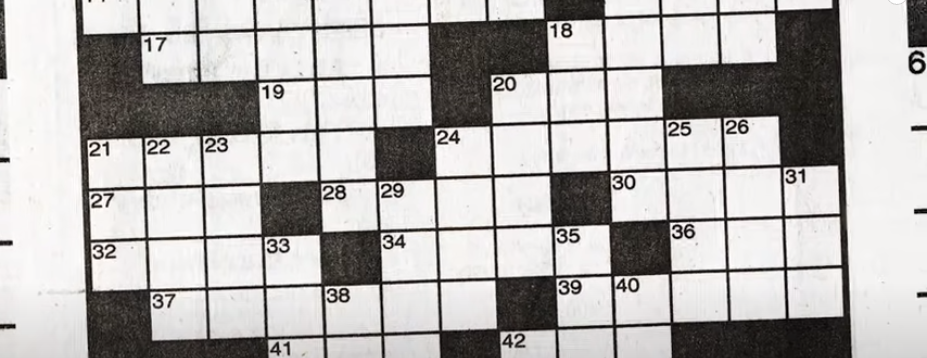David Kwong a cruciverbalist and his process of crafting a puzzle for the times.
What is a puzzle?
Well puzzles are all around us, if you think about it there are problems everywhere. A good puzzle makes the player feel smart when solving it.
The task of a crossword maker is to present a challenging puzzle, make you think out of the box and hopefully have that ‘Aha!’ moment when you feel smart. The Aha! moment is when you crack the puzzle. You are solving a puzzle and everything just clicks.
Crossword puzzle is the type of word puzzle where there is always an across and down. Every letter is checked. Which means if you don’t know one way, you can probably figure out the other way. It was invented in 1910s, it’s well over 100 years old and appeared in new york.
David started constructing crossword puzzles while in college. A friend told him how to do it and he started mailing them in the nytimes magazine. The rejections of course followed because you cannot possibly get it right since the first time. He finally broke through and managed to get his submission published, he has been writing for The Times and a bunch of other newspapers ever since.
The first thing you need to do when making a puzzle is come up with your theme – a bit of word play that will run throughout the puzzle. So for example your theme would be ‘Playing Cards’. After you have come up with the theme you need to write down the long answers and these are parallel and length. So if you have a 8 letter answer you will need another 8 letter answer. If you only have one 12 letter answer that is ok – because it can go right in the middle of the grid.
Now the goal of the the puzzle maker would be to hide
JACK
TEN
QUEEN
ACE
KING
inside other words in the grid.
So in this imaginary puzzle we have
peacefulnesses
and if you can see ‘ace’ is right in the middle of it.
another answer would be
viking
and inside that word we would have ‘king’
then in
jackhammer
we would hide ‘jack and so on.
Symmetry
Another thing to consider when making a puzzle is keeping a diagonal symmetry. It is not horizontal, it is not vertical. So if we flip the board 180 degrees the black squares will be in the same position. There are also rules related to black squares because you can’t create a clumpy black squares so you must have nice diagonal lines often.
Black squares also are needed to break up difficult letter combos.
Another rule is that there are now 2 letter answers, the minimum for an answer is three letters and every letter has to be checked both across and down. So if there is a piece of obscure trivia you should be able to access it from the other direction.
So after the grid is set. It is time to write the crossword clues. There are easier clues in the Monday, harder clues in the week.
So lets start with PEACEFULNESS
the clue would be
A state of peace or a state of calmness.
for JACKHAMMER
a possible clue for Monday would be
A hammer to break pavements.
or a Saturday Clue
You could break pavements with it.
And Voila, you now know how to make New York Times Crossword Puzzle.

